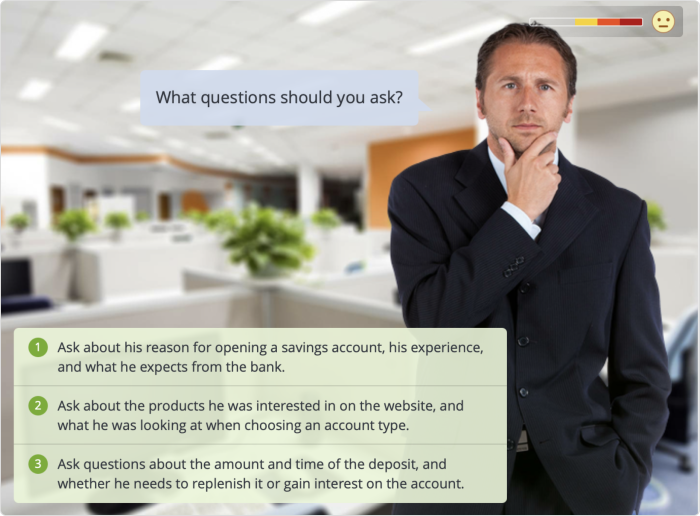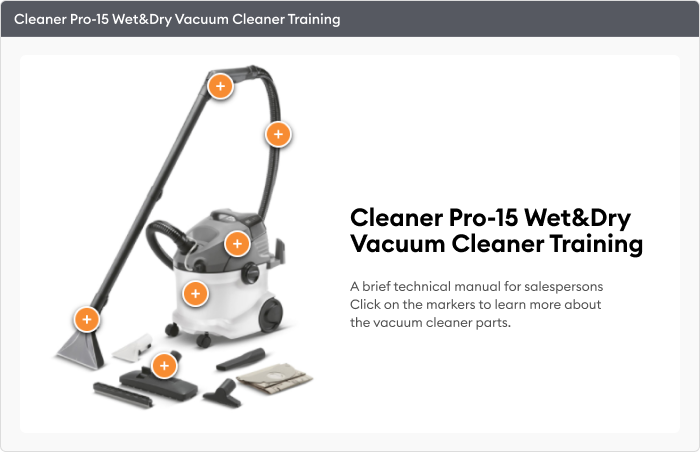Corporate eLearning 101: What You Didn’t Know You Need to Know

The trend nowadays is from office to online, in case you hadn’t noticed. But more worrisome than empty office spaces are empty training calendars. Happily, these are readily filled with eLearning – anywhere and anytime. In this article, we’ll be looking at the whys and wherefores of corporate eLearning: why it is so important to be up to speed with today’s online opportunity and where you can implement this cutting-edge technology. Hint: just about “everywherefore.”
Why eLearning Is the Future of Corporate Training
Corporate training needs to be up to speed with eLearning. Why? Well, put yourself “in the trainer’s seat”: the company you train has over 1,000 employees of different ages, at different capacity levels, who work in departments that have nothing to do with each other, filled with individuals with wildly varying cultural contexts, who speak different languages – and need to be trained appropriately.
That may seem like quite a handful, but eLearning handles all this very nicely. What is more, once a course has been created, it only needs to be tweaked occasionally to update it with new data or regulations.
Corporate eLearning can be received on any device: desktop, laptop, tablet, and smartphone. Lastly, as most employees are working remotely nowadays, they will probably be taking these courses or attending class at their newly carved out “home office.” And it looks like things will, to a large degree, stay that way. So, we’re not talking about a room full of employees sitting in a room full of computer screens, but more like a world full of employees, each one focusing on their desktop, laptop, tablet, or smartphone – at home or even at a café. It’s called mobile learning.
Besides being more cost effective, as eLearning courses can be taken at the press of a button, they can also be taken without pressure – the learner can study when and where they want and review as desired to cement their understanding of the material. And even if a group of employees need to study the same material, slower learners can go over the contents at their own pace and review if/when needed without fear of being left behind (or bullied), which is not possible with classroom-based learning.
Show me da numbahs. Stat!
To drive the point home that corporations need to be in the eKnow about eKnowledge, now more than ever, here are some digits to chew on:
- eLearning courses can be completed 60% faster than in-person courses
- eLearning students retain five times more knowledge
- The mobile eLearning market is projected to be worth $38 million by the end of 2020
- The eLearning market has surpassed $200 billion and is expected to exceed $375 billion by 2026
These stats should not be surprising, given that 90% of corporations now use corporate eLearning compared to just 4% in 1995. Do you remember what corporate training was like back before Y2K? Yeah. Don’t go there. But if that’s where you are, don’t stay there.
What Solutions Are Provided with eLearning?
Now, for the uninitiated, or as yet unconvinced, it’s sensible to ask what eLearning can be used for. So let’s do a rundown of some of its utilities:
Onboarding and orientation
Gone are the days when someone from HR sits down with a new employee or employees to welcome them to the company and brief them on company policies and their specific role in the organization – preferably with free-flowing coffee. This can now be accomplished elegantly with eLearning. And it doesn’t have to be limited to documents with page after page of standardized information; images, audio, and video can be incorporated into an onboarding/orientation presentation that can be tailored according to the new employees’ department and tasks. Also, a quiz can be included at the end of the course or presentation to ensure that the new arrival has sufficiently retained the information.
Here’s an example of the microlearning course designed to help new hires get up to speed quickly. It was created with iSpring Suite, an authoring toolkit that allows you to build eLearning content fast even if you have no instructional design skills.
Compliance training
Compliance training is for most L&D and HR staff what “death and taxes” are for most: inevitable and less than inspiring. And we all know that it can’t be ignored, as the consequences for the organization can be dire. Worst of all, government regulations, legislation, and even corporate policy are constantly changing. But what if you could make this specter take care of itself?
eLearning is at your side. Regardless of the content required to keep both new hires and veteran staff up to date on changes that take place both inside and outside of the corporation – whether it is more suitable to provide employees with texts, images, or videos – eLearning fits the bill. Once the basic information has been organized into a course, it only needs to be updated periodically and sent, or resent, out to those who need to be updated.
You can include a quiz at the end of the corporate eLearning compliance training course and emit a certificate of completion for those who pass, or allow the learner to take it again in order to make sure they are “up to snuff.” These certifications are essential for government compliance, so having them at your fingertips, instead of giving paper exams, grading them, storing them and, having to assemble them for submission to government entities when needed, makes your job that much more effortless.
Here is an example of an interactive course on fire safety that was created with iSpring Suite.
Customer service training
You’ve certainly heard the adage that “the customer is always right.” But whether you hold to that entirely or not, the fact is that the customer does need to be escorted to a happy ending, to the degree that this is possible. For B2C companies, then, customer service (and other soft skills), and the training thereof, is essential. Why? No customers, no company. Thankfully, eLearning can handle this nicely, and in a safe-to-fail modality. As training and practice is the name of the game in customer service training, instead of a senior staff person taking time from their tasks to repeatedly go over every aspect of the organization’s protocol and test the learner with possible customer service scenarios, an exhaustive range of possible situations can be mocked up with examples of in-person situations or customer support call dynamics.
This is an example of a dialogue simulation for training bank managers, created with iSpring Suite:
Sales training
In some ways, sales are similar to customer service, in that one wants to achieve a desired outcome – in this case, a sale made to a satisfied client.
Those who have not mastered sales or are new to a product or a product category need comprehensive sales and product training. As it can be time-consuming for a senior salesperson to take the time to “show them the ropes” and might not even be located in the same city or country, training modules can be extremely effective.
The virtual “safe-to-fail” dynamic can be expeditious in this regard, as the learner can make mistakes in an eLearning course in order to ensure that they will more likely make sales (and not ‘fails’) in a real-life situation.
If not fully prepared, the salesperson can be taken off guard by a potential buyer’s questions or challenges. Practicing in the field can spell disaster in terms of wasted travel, time, expenses, and corporate revenue.
Branching scenarios are excellent for this safe-to-fail training ground, as the trajectory of the interaction changes based on the decisions that the salesperson makes in their exchange with the customer.
To give you an idea of how this works, here is a dialogue simulation for training car sales managers:
Now, even a veteran salesperson needs to be fully briefed on the benefits of the product being offered, as new models and upgrades are regular occurrences. Unfortunately, this type of employee is usually in the field – and possibly in another country – and can’t always be returning to corporate headquarters for briefing sessions.
For this type of staff person, microlearning, or short learning modules that provide “just in time” (JIT) information will keep these salespersons productive while on the go. Here is an example of a microlearning module on a product, also created with iSpring Suite:
Refresher training
The longer any employee is with a company, the more definitely they will need refresher training on any number of topics. This can be either because one can tend to deviate from company norms over time or because new concepts or regulations are being implemented regarding otherwise standard practices.
An agile Learning Management System (LMS) has your back here, because you can schedule refresher trainings at set time intervals on those corporate topics that will undergo regular updates, as well as government regulations and legislation that changes from time to time.
How to Launch eLearning in Your Company
Assuming that we’ve now impressed upon you the importance of implementing corporate eLearning “in the now,” let’s look at the steps you need to take to be “in the know.”
Step 1. Define your objective
Do you want to implement eLearning in your organization because everyone else is already there? Well, yes and no. You certainly don’t want to be left behind, but it’s also important to define the “why.” We’ve mentioned onboarding/orientation, compliance, customer service, sales, and refresher training. Do any of these needs exist in your company? Exactly.
Step 2. Choose your tools
After defining what you want to accomplish, pick the corporate training software that will get those jobs done. If you’re in a smaller company, you want a solution that is user-friendly and downright intuitive (i.e., little or no learning curve). And even if you are in a larger corporation, you don’t want to be dependent on the IT staff for everything you want to create and use.
First, you’ll need a course authoring toolkit and, second, you’ll need to decide on an online space where you can host contents, and a fairly effortless way to distribute to your learners and keep track of the eLearning process and results. This second requisite is handled nicely with a Learning Management System (LMS) we’ve mentioned above.
iSpring LMS is a serious contender for organizations of any size. It allows you to upload the courses you build, invite learners to take them, keep track of their progress, make it fun with gamification, and measure to what degree they have retained the information through comprehensive reports on the results of the quizzes that can be added to your courses – and either generate a certificate of completion or reassign the course if they didn’t sufficiently master the content. Keep in mind that with eLearning all this can be accomplished with employees who are anywhere in the world and from anywhere you happen to be on the planet.
Step 3. Budget and then act
Do you have an instructional designer on staff? Will you need one? If you want to produce eLearning content in house, you’ll need to take into account the cost of staff time needed to learn and use the new software. What kind of learning curve does it present? Is it easy to use or not so user friendly?
Different software solutions can have very different pricing plans. You need to be cautious to avoid apparently saving costs at the front end, only to discover that all of the tools that you’ll actually need are expensive add-ons – something that happens with learning management systems (LMSs) all too often.
And what about your equipment? Will you need new hardware to be able to use this new software?
Step 4. Prepare the content
Preparation of course content can take weeks or even months. On the other hand, if you plan to automate the material of an existing course, it is a matter of repurposing printouts, text documents (Word and PDF documents can be converted into flipbooks), standalone videos, quizzes, etc. into a cohesive body of information that, when organized, can simply be updated periodically, in the case of an onboarding or compliance course, for example.
Happily, there are cutting-edge authoring tools that can “do all the heavy lifting” for you, like the aforementioned iSpring Suite. It is integrated into familiar PowerPoint and appears as a new tab. The learning curve, in this case, is close to zero and if you’re already running PowerPoint, you’re ready to “slide into home” and produce professional-looking courses with ease. Just add the texts, images, audio recordings, and videos and you’re off to the races with the option of using screencasts, picture in picture videos, quizzes, branching scenarios, and a lot more things that weren’t possible in the previous millennium.
Step 5. Test your project
As “the proof is in the pudding,” it’s now time for a “dry run.” You’ve probably gone through all of the stages of the course as a content creator, but it is always best to test it from the learner’s side – and preferably with select employees who have not yet been exposed to this new course. Does the content flow well with a didactic logic and is readily digested? Do all the branching dialogues and quizzes work correctly? Is the scoring accurate and do the performance reports get sent to you automatically? Did everyone who passed the course receive a certificate of completion, if you had set that up?
This “test drive” will allow you to get valuable results and feedback from this pilot group of learners in order to assure a satisfactory experience on the part of those many employees who will be taking this course when you formally launch it.
Step 6. Encourage the use of eLearning
If you are introducing corporate eLearning to your company, you might come up against some degree of resistance on the part of the employees. Getting past “But we’ve always done it that way” can take a certain amount of encouragement. If senior employees post positive reviews after being exposed to the pilot course, for example, others are more likely to get on board. Show the staff how enjoyable eLearning courses can be in order to generate a positive buzz.
Step 7. Measure effectiveness
So, how did it go? How much ‘bang’ did you get for your ‘buck’? Corporate learning can serve to accomplish a variety of ends. It can orient new employees, in the case of an onboarding course, bring a group up to date on new legislation or corporate policy, as with compliance courses, or instruct them on new tasks that they will need to perform.
It is essential to measure the effectiveness of your eLearning with analytics tools, and that is where the learning management system (LMS) comes into play again. You can also evaluate results in real-time, looking to see if employees gained new skills more quickly and are more productive as a result, and if they are acting in compliance with legislation and corporate policy.
For a more in-depth treatment of implanting eLearning in your organization, refer to our article, “How to launch an eLearning project in 7 steps.”
Final Thoughts
Do what works. Corporate eLearning works. Un-e-quivocally. And it works hard for you so you don’t have to work so hard. Nuff said? We thought so.








